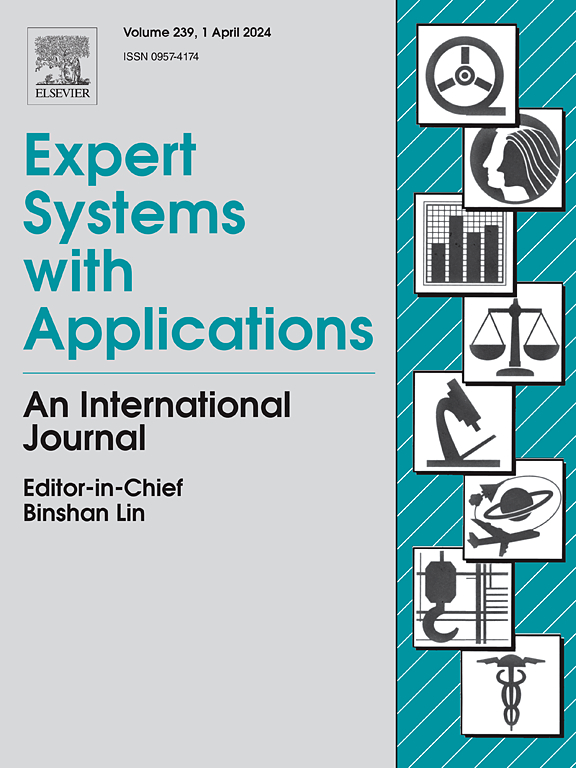基于可解释人工智能的弹性光网络高效内容放置框架
IF 7.5
1区 计算机科学
Q1 COMPUTER SCIENCE, ARTIFICIAL INTELLIGENCE
引用次数: 0
摘要
电信网络的飞速发展带来了新的优化问题,迫切需要专门的高效解决方法。最近,利用机器学习(ml)算法辅助网络优化的想法越来越受到研究界的关注。尽管这些方法的成功应用不胜枚举,但它们在实际网络和系统中的应用却受到了阻碍,原因是它们的决策缺乏充分的可解释性,反过来也缺乏信任。希望可解释人工智能方法(xai)能解决这些问题。在本文中,我们将研究任播内容放置的一个基本问题。有一组位于选定网络节点的物理数据中心(dcs)和一组不同的内容(服务),任务是决定将每个内容放置在哪个数据中心,以提高光网络性能(以带宽阻塞概率(bbp)衡量)。为此,我们提出了一个基于 ml 的专用框架,该框架将放置问题作为一项监督学习任务来处理,即预测内容放置配置的网络阻塞概率。我们进行了大量的数值实验来调整该框架,考虑了五种监督学习算法和三种比较指标。我们还使用了可解释的人工智能方法来解释模型的决定,并得出关于真实网络中有益内容放置的一般结论。最后,我们将所提出的基于 ml 的投放框架的性能与三种参考方法进行了比较。结果证明,我们的方法效率极高,与最佳参考方法相比,大大降低了 bbp。根据网络设置和提供的流量,该框架最多可为 47% 的流量提供服务,而最佳参考方法会拒绝这些流量(相当于 3.76 Tbps 的数据)。本文章由计算机程序翻译,如有差异,请以英文原文为准。
Explainable artificial intelligence-based framework for efficient content placement in elastic optical networks
The rapid development of telecommunication networks brings new optimization problems and the urgent need for dedicated and highly efficient solution methods. Recently, the idea of aiding network optimization with machine learning (ml) algorithms has gained more and more attention in the research society. Despite numerous successful applications of these methods, their adaption in real networks and systems is hindered due to the lack of a full explainability of their decisions and, in turn — the lack of trust. Hopefully, these aspects may be addressed by explainable artificial intelligence methods (xai). In this paper, we study an essential problem of the anycast content placement. Having a set of physical data centers (dcs) located in selected network nodes and a set of different contents (services), the task is to decide in which dcs place each of the contents in order to improve the optical network performance (measured as a bandwidth blocking probability (bbp)). To this end, we propose a dedicated ml-based framework, which approaches the placement problem as a supervised learning task of predicting network’s bbp for a content placement configuration. We perform extensive numerical experiments to tune the framework, considering five supervised learning algorithms and three comparison metrics. We also use explainable artificial intelligence methods to interpret the models’ decisions and draw general conclusions regarding beneficial content placement in a real network. Lastly, we compare the performance of the proposed ml-based placement framework with three reference methods. The results prove our approach’s extremely high efficiency, which reduced the bbp significantly compared to the best reference approach. Depending on the network settings and the offered traffic volume, the framework allowed to serve up to 47% of the traffic that would be rejected by the best reference method (corresponding to 3.76 Tbps of data).
求助全文
通过发布文献求助,成功后即可免费获取论文全文。
去求助
来源期刊

Expert Systems with Applications
工程技术-工程:电子与电气
CiteScore
13.80
自引率
10.60%
发文量
2045
审稿时长
8.7 months
期刊介绍:
Expert Systems With Applications is an international journal dedicated to the exchange of information on expert and intelligent systems used globally in industry, government, and universities. The journal emphasizes original papers covering the design, development, testing, implementation, and management of these systems, offering practical guidelines. It spans various sectors such as finance, engineering, marketing, law, project management, information management, medicine, and more. The journal also welcomes papers on multi-agent systems, knowledge management, neural networks, knowledge discovery, data mining, and other related areas, excluding applications to military/defense systems.
 求助内容:
求助内容: 应助结果提醒方式:
应助结果提醒方式:


